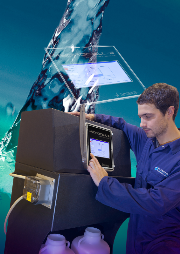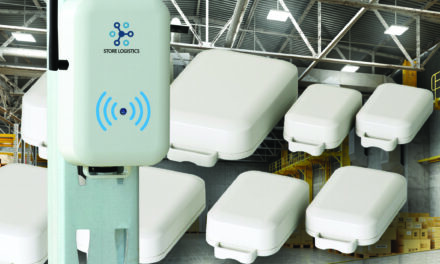 Choosing the right pump and the best supplier are important decisions for any OEM or design engineer. Performance, quality, cost, reliability and maintenance, all need to be considered. First and foremost, however, is the requirement to fully understand the different technologies available. What follows is a ten point guide to some of the notable advantages of peristaltic positive displacement pumps, for those faced with sampling and metering in effluent/water applications.
Choosing the right pump and the best supplier are important decisions for any OEM or design engineer. Performance, quality, cost, reliability and maintenance, all need to be considered. First and foremost, however, is the requirement to fully understand the different technologies available. What follows is a ten point guide to some of the notable advantages of peristaltic positive displacement pumps, for those faced with sampling and metering in effluent/water applications.
Arguably the most significant benefit is that there is no possibility of the fluid contaminating the pump, or the pump contaminating the fluid.
In a peristaltic pump, an elastomeric tube is squeezed against a semi-circular track by two or more rollers mounted on a rotating rotor. The tube is compressed (occluded) by the first roller and recovers to its full cross-sectional area after the roller passes. This creates a vacuum that draws more fluid into the tube which is again forced forward by the advancing roller. The determining factor of a peristaltic pump’s performance and reliability is the mechanical ability of the tube to recover its cross-sectional area after its compression (or occlusion) against varying suction and discharge pressure conditions.
- There are no valves, seals or glands to leak, clog or replace, with the obvious savings in maintenance, repair and downtime. This is part of the inherent design attributes of peristaltic pumps.
- Pumps are designed for continuous duty, 24 hours a day, seven days a week.
- Because peristaltic pumps are positive displacement pumps moving a fixed volume for each revolution, flow rates are linearly proportional to speed and are independent of the inlet pressure, discharge pressure and fluid viscosity. This results in superior flow rate stability and metering accuracy to 0.5%.
- Reversible flow direction allows easy draining of delivery lines and eliminates product waste or the need for flushing.
- Peristaltic pumps offer continuous dry-running and self-priming capability up to 9 metres, and will pump gas as well as fluid.
- Easy installation and operation can be taken for granted. Changing the pump from one fluid to another takes only minutes and is as simple as changing the tube. Multiple tube sizes can be used in the same pump to change the capacity of the pump.
- Tubing is the only serviceable part of a peristaltic pump and can be replaced in seconds. It is the tubing that largely defines the pumps’ performance, biocompatibility and chemical resistance. Watson-Marlow is the only peristaltic pump company to manufacture its own tubing, and consequently, is the only one to guarantee the performance of the pump and tube system.
- Pumphead design prevents backflow and siphoning without the need for ball check, back-pressure or foot valves.
- Pumps have a pressure capability up to 100 psi at lower flow rates.
- Noting the difficulty customers often experience when matching gear motors to the varying torque requirements of peristaltic pumpheads, Watson-Marlow has recently launched DriveSure a plug-and-play, integrated brushless DC gear motor and controller range. DriveSure eliminates time, design uncertainty, and the risk associated with the separate specification of pump motor, gearbox and drive.
 All these benefits are directly applicable to engineers in the effluent/water industry, as a number of existing users can verify. For instance, the selection of Watson-Marlow 501FDC/RL OEM pumps for use in a new generation of intelligent wastewater sampling systems developed by Halifax-based Pulsonic Technologies aided early sales, ahead of official launch.
All these benefits are directly applicable to engineers in the effluent/water industry, as a number of existing users can verify. For instance, the selection of Watson-Marlow 501FDC/RL OEM pumps for use in a new generation of intelligent wastewater sampling systems developed by Halifax-based Pulsonic Technologies aided early sales, ahead of official launch.
 “We found we simply couldn’t get the performance elsewhere in terms of pump lift capability,” explains Business Development Manager, Liam Duffy. “A lot of the trade effluent produced by companies such as food manufacturers flows through underground drains where the lift often needs to be as much as 7 metres. Normally an additional pump would be required to accommodate this, but the capability of the Watson-Marlow pump saves this extra cost.”
“We found we simply couldn’t get the performance elsewhere in terms of pump lift capability,” explains Business Development Manager, Liam Duffy. “A lot of the trade effluent produced by companies such as food manufacturers flows through underground drains where the lift often needs to be as much as 7 metres. Normally an additional pump would be required to accommodate this, but the capability of the Watson-Marlow pump saves this extra cost.”
The success story is similar at Oldham-based Analytical Technology, a specialist manufacturer of water quality measurement and monitoring systems that is using peristaltic pump technology from Watson-Marlow for use in chlorine monitoring equipment after similar pumps were found less reliable. The monitors house a Watson-Marlow 313FAC/D2 OEM pump.
“We originally switched to Watson-Marlow as we found their pumps were cheaper to operate and more reliable,” says ATI UK’s Technical Manager, Chris McTear. “We had tried other pumps but it was obvious that peristaltic represented the way ahead. Ultimately, the corporate attitude of ATI is to make high quality monitors at a competitive price, which are easy and cheap to maintain, and simple to use. This ethos fits with the Watson-Marlow peristaltic pumps and we will continue this strategy moving forward.”

